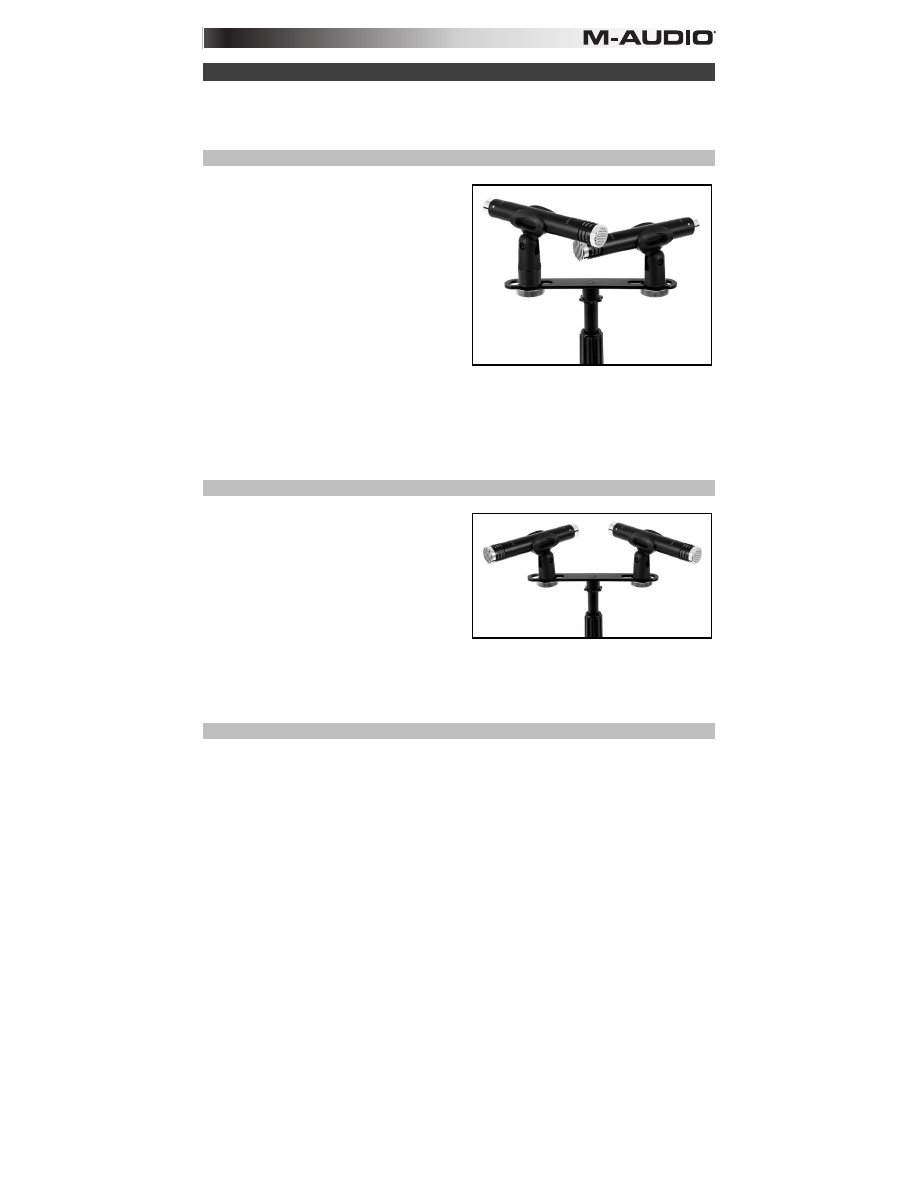
5
Recording Methods
This section covers two of the most common stereo recording techniques and will help you get
started recording quickly. Keep in mind that there are many different ways of recording in stereo
and this section is not an exhaustive study of all of the possible methods.
X-Y
This method of stereo recording is very popular
due to its relative simplicity in setup and
excellent mono mixdown compatibility. To use
this method, attach both Pulsar II microphones
to the stereo bar while using the Microphone
Riser adapter on one of the microphones. The
microphone riser positions one Pulsar II higher
than the other, allowing the capsules to cross
while remaining on parallel planes. The result
of this positioning allows for recording the
truest possible stereo image.
Align the microphones so that the capsules are
stacked directly on top of each other at a 90°
angle. If you would like a wider stereo image,
this angle can be increased up to about 110° while a narrower stereo field can be created by
reducing this angle down to 60°. Experiment with various angles until you find one that works
best for your application.
As stated earlier, an additional advantage of this miking method is excellent mono mixdown
compatibility. This means that your left and right channels can be summed together into mono
with little or no phase-related issues such as cancellation or comb filtering.
ORTF
This recording method was originally
developed by the French national broadcasting
agency, the Office de Radio Télévision
Française (ORTF) and emulates the pickup
pattern of the human ears. To use this method,
place the microphones on the Stereo Bar so
that the capsules are 6-7 inches apart and that
the microphones form a 110° angle. The
Microphone Riser is not required in this
configuration.
This method results in a wide, natural sounding stereo image with good separation. However,
recording engineers should be careful if mixing down ORTF signals to mono since phase
issues (cancellation, comb filtering, etc.) may result depending on the placement of the
microphones.
Additional Methods
As stated in the previous section, there are a variety of stereo recording methods not
mentioned in this guide (Blumlein, Mid-Side, Spaced Omni, Decca Tree, etc.) and each method
has its advantages and drawbacks. Your matched Pulsar II microphones and stereo bar are
compatible with many of these methods.
A great deal has already been written about stereo recording and we suggest searching the
Internet or visiting your local music retailer or bookstore to learn more about these additional
methods.






































